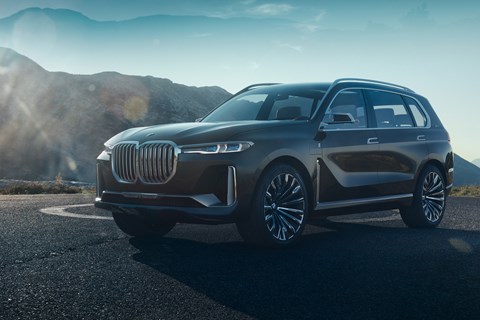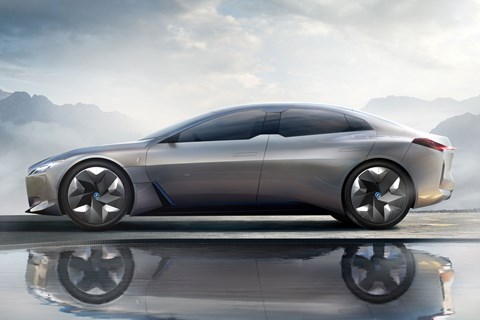► BMW trademarks iX1 to iX9
► iNext could become iX5 or iX6
► Ian Robertson talks BMW i product offensive
BMW has paved the way for a series of i-badged crossovers and two more luxury SUVs, by trademarking a host of potential model names. The company has registered iX1 to iX9, meaning the company’s next i electric car, a crossover with advanced autonomy coming 2021, could potentially be badged iX5 or iX6. Executives currently refer to it as the iNext.
The trademarks also cover X8 and X9, giving BMW the opportunity to triple down on luxury SUVs. The X7, a Range Rover-plus sized SUV with three rows of seats, will be first to market in 2018, having been previewed by a concept car at the 2017 Frankfurt show.

It’s all part of a concerted push upmarket, according to the sales and marketing board member Ian Robertson. ‘We’re intent on expanding our footprint in the luxury segment. We see this as a growth engine, an ability to be more profitable.’ The luxury cars will be marketed under the Bayerische Motoren Werke script: think of it as mirroring the relationship between fashion house Calvin Klein and its more-high street offshoot, the CK brand.
Taking the pulse of BMW’s i brand: i Vision Dynamics, iNext and more
All the new trademarks include the tell-tale ‘X’ descriptor, applied to BMW’s Sports Activity Vehicles. ‘X is a very important part of our business,’ said Robertson. ‘It’s 30% of our global sales and continues to rise. In many markets, it’s the segment that’s driving overall growth.’ Since the launch of the first X5 in 1999, BMW has sold 5.5m X cars worldwide.

Another priority is electrification. The iNext will employ new-generation lithium-ion batteries, which will enable an enhanced range between 600 and 700km (372 and 434 miles). The engineers have created scalable battery cells, where greater quantities can be packed into high performance or bigger vehicles, side-by-side like a packet of Custard Cream biscuits. A base vehicle gets a 60kWh battery stack (for around 280 miles of range), 90kWh enables a 342-mile range for middle distance runners, while top spec vehicles such as the iNext package the 120kWh stack.
The electric motors – producing 200kw (268bhp) – will also be deployed in steps. While an entry-level BEV may only have 200kw spinning the front axle, a car such as the iNext could add two 200kw motors at the rear, giving 600kw in total (804bhp), and good for a 0-62mph sprint in around 4.0secs.

Robertson pledged that BMW would have 25 electrified vehicles – plug-in hybrids or full battery electric – on sale by 2025. Twelve of them will be BEVs: a full-electric Mini and X3 will be rolled out before the end of this decade. The iNext, and the iVisionDynamics – a BEV in a 4-series Gran Coupe-style body, also shown as a Frankfurt concept – arrive from 2021.
BMW in the midst of the biggest new model offensive in its history: it is launching more than 40 new models over the period 2017-18. Next year’s bumper crop includes the X1’s more stylish brother, the X2, an i8 Roadster, and production versions of three of this year’s concepts: the Z4 roadster, 8-series and the X7.
Check out our review of the first-ever all-wheel drive BMW M5